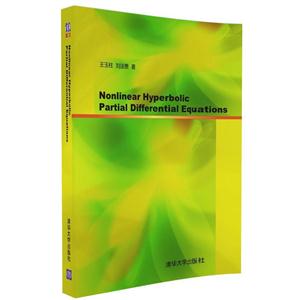
作者:姜淳,宋培
页数:232
出版社:上海科学技术出版社
出版日期:2020
ISBN:9787547845615
电子书格式:pdf/epub/txt
内容简介
本书系统、全面地总结了国内外在稀土离子多重掺杂光子玻璃中发光离子的相互作用方面的最新成果,介绍了各类掺杂材料的概念、非线性发光功能效应、研究与开发现状、应用领域、存在的问题及其发展方向。内容包括新型掺杂材料和多稀土共掺杂材料的光谱性质计算、相互作用的理论模型、在光电子器件和光通信系统与网络等中的应用,涉及所有的稀土和过渡金属离子的光谱性质,覆盖面非常广。
作者简介
姜淳,上海交通大学电子信息与电气工程学院电子工程系教授。2005.10-2006.11: 美国麻省理工学院(MIT)电子学研究实验室(RLE)和物理系高级研究学者。从事光电子材料与器件的研究近20年,发表SCI学术论文100余篇, SCI他引500余次;发明专利10余项;2007年获得教育部自然科学一等奖,2009年获得上海自然科学三等奖。
本书特色
适读人群 :光学、光电子学、光化学等相关专业学生、教师和科研人员稀土掺杂材料的制备和性质的研究在国内外已经有较长的历史,国内外有不少专著总结介绍这方面的成果,这些著作大多是十多前出版的,最近十来年几乎没有新作问世。然而,随着光电子学科的发展,新的稀土离子多重掺杂光子玻璃材料和新的现象不断出现。因此,需要一本新的专著来系统地总结该领域的成果。本书涉及所有的稀土和过渡金属离子的光谱性质,覆盖面非常广,对光电子或相关领域同行极有参考价值。
目录
1Fundamental Mathematics of Nonlinear Emission Photonic Glass Fiber and Waveguide Devices1
1.1Introduction1
1.2Newton Iteration Algorithm for Nonlinear Rate Equation Solution1
1.2.1Single睼ariable1
1.2.2Multi睼ariable3
1.3RungeKutta Algorithm for Power睵ropagation Equation Solution4
1.3.1Single睩unction4
1.3.2Multi睩unctions6
1.4Two睵oint Boundary Problem for Power睵ropagation Equations in a Laser Cavity7
1.4.1Principle7
1.4.2Shooting Method and Relaxation Method7
References92Fundamental Spectral Theory of Photonic Glasses10
2.1Introduction10
2.2JuddOfelt Theory10
2.3Transition Probability and Quantum Efficiency12
2.4Fluorescence Branch Ratio13
2.5Homogeneous and Inhomogeneous Broadening of Spectra14
References153Spectral Properties of Ytterbium睤oped Glasses16
3.1Introduction16
3.2Formation Region of Yb2O3Containing Glasses16
3.3Laser Performance Parameters of Ytterbium睤oped Glasses17
3.3.1Minimum Fraction of Excited State Ions17
3.3.2Saturation Pump Intensity18
3.3.3Minimum Pump Intensity18
3.3.4Storage睧nergy and Gain Parameters18
3.4Spectral Properties of Yb3+Doped Borate Glasses19
3.4.1Compositional Dependence of Spectral Properties19
3.4.2Dependence of Spectral Properties on Active Ion Concentration22
3.5Spectral Properties of Yb3+Doped Phosphate Glasses23
3.5.1Compositional Dependence of Spectral Properties23
3.5.2Dependence of Spectral Properties on Active Ion Concentration26
3.6Spectral Properties of Yb3+Doped Silicate Glasses28
3.6.1Compositional Dependence of Spectral Properties28
3.6.2Dependence of Spectral Properties on Active Ion Concentration32
3.7Spectral Properties of Yb3+Doped Germanate Glasses34
3.8Spectral Properties of Yb3+Doped Telluride Glasses36
3.8.1Compositional Dependence of Spectral Properties36
3.8.2Dependence of Spectral Properties on Active Ion Concentration39
3.9Dependence of Spectral Property and Laser Performance Parameters on Glass System43
3.9.1Dependence of Spectral Property on Glass Systems43
3.9.2Dependence of Laser Performance Parameters on Glass Systems46
3.10Dependence of Energy睱evel Structure of Yb3+ on Glass Systems51
3.11Cooperative Upconversion of Yb3+ Ion Pairs53
3.11.1Cooperative Upconversion Luminescence53
3.11.2Concentration睶uenching Mechanics57
3.11.3Concentration Dependence of Luminescence Intensity59
3.12Fluorescence Trap Effect of Yb3+ Ions in Glasses60
References634Compact Fiber Amplifiers65
4.1Introduction65
4.2Level Structure and Numerical Model66
4.3Dependence of Gain and Noise Figure on Concentrations67
4.4Doping Concentrations with Short睱ength High Gain71
References725Photonic Glass Fiber Lasers74
5.1Introduction74
5.2Fundamental Physics of Fiber Laser74
5.2.1Lasing Conditions of Laser74
5.2.2Threshold Gain75
5.2.3Phase Condition and Laser Modes76
5.2.4Population Inversion Calculation76
5.3Numerical Models of Rare睧arth睤oped Fiber Lasers80
5.3.1Configuration and Power睵ropagation Equations of Fiber Laser80
5.3.2Output Power of a Two睱evel Fiber Laser81
5.3.3Output Power of a Three睱evel Fiber Laser83
5.3.4Output Power of a Four睱evel Fiber Laser84
5.3.5Output Power of Yb3+Doped Fiber Laser85
References906Broadband Fiber Amplifiers and Sources91
6.1Introduction91
6.2Pr3+Tm3+Er3+Co睤oped Fiber System92
6.2.1General Rate and Power睵ropagation Equations with Two Wavelength Pumps92
6.2.2Gain Characteristics with 980nm Pump96
6.2.3Gain Characteristics with 793nm Pump99
6.2.4Gain Characteristics with Double Pumps105
6.3Gain Characteristics of Pr3+Er3+Co睤oped Fiber System131
6.3.1Rate and Power睵ropagation Equations131
6.3.2Dependence of Gain on Fiber Parameters134
6.4WDM Transmission System Cascaded with Tm3+Er3+Co睤oped Fiber Amplifiers139
6.4.1WDM System with Single Pump140
6.4.2WDM System with Dual Pumps141
References1437Photonic Glass Waveguide for Spectral Conversion145
7.1Introduction145
7.2Theoretical Model and Spectral Characterization 146
7.2.1Theoretical Model 146
7.2.2Spectral Characterization 148
ContentsixxContents7.3Doubly睤oped System 148
7.3.1Energy Transfer Model 149
7.3.2Quantum Efficiency of Photonic Glass Waveguide 152
7.4Triply睤oped System 159
7.4.1Energy Transfer Model 159
7.4.2Quantum Efficiency of Photonic Glass Waveguide 163
7.5Performance Evaluation of sc睸i睸olar Cell with Photonic Glass Waveguides 171
References1748Photonic Glass Waveguide for White睱ight Generation177
8.1Introduction 177
8.2White睱ight Glasses 178
8.2.1Tm3+Tb3+Eu3+Co睤oped System 178
8.2.2Yb3+Er3+Tm3+Co睤oped System 185
8.3Emission睺unable Glasses194
8.3.1Tb3+Sm3+Dy3+Co睤oped System 194
8.3.2Tm3+Yb3+Ho3+Co睤oped System 205
References214Appendix 1Matlab Code for Solving Nonlinear Rate and Power Propagation Equation
Groups in Co Doped Fiber Amplifiers or Fiber Sources219
A1.1Nonlinear Rate Equation Group and Coupled Power睵ropagation
Equation Group of a Three睞ctive Ions睠o睤oped System219
A1.2Code for Solving Linear Rate Equation Group220
A1.3Code for Solving Nonlinear Rate Equation Group220
A1.4Code for Variation of Gain with Fiber Length222
A1.5Code for Variation of Gain with Active Ion Concentration223Appendix 2Matlab Code for Solving Power睵ropagation Equations of a Laser
Cavity with Four睱evel System225Index228















